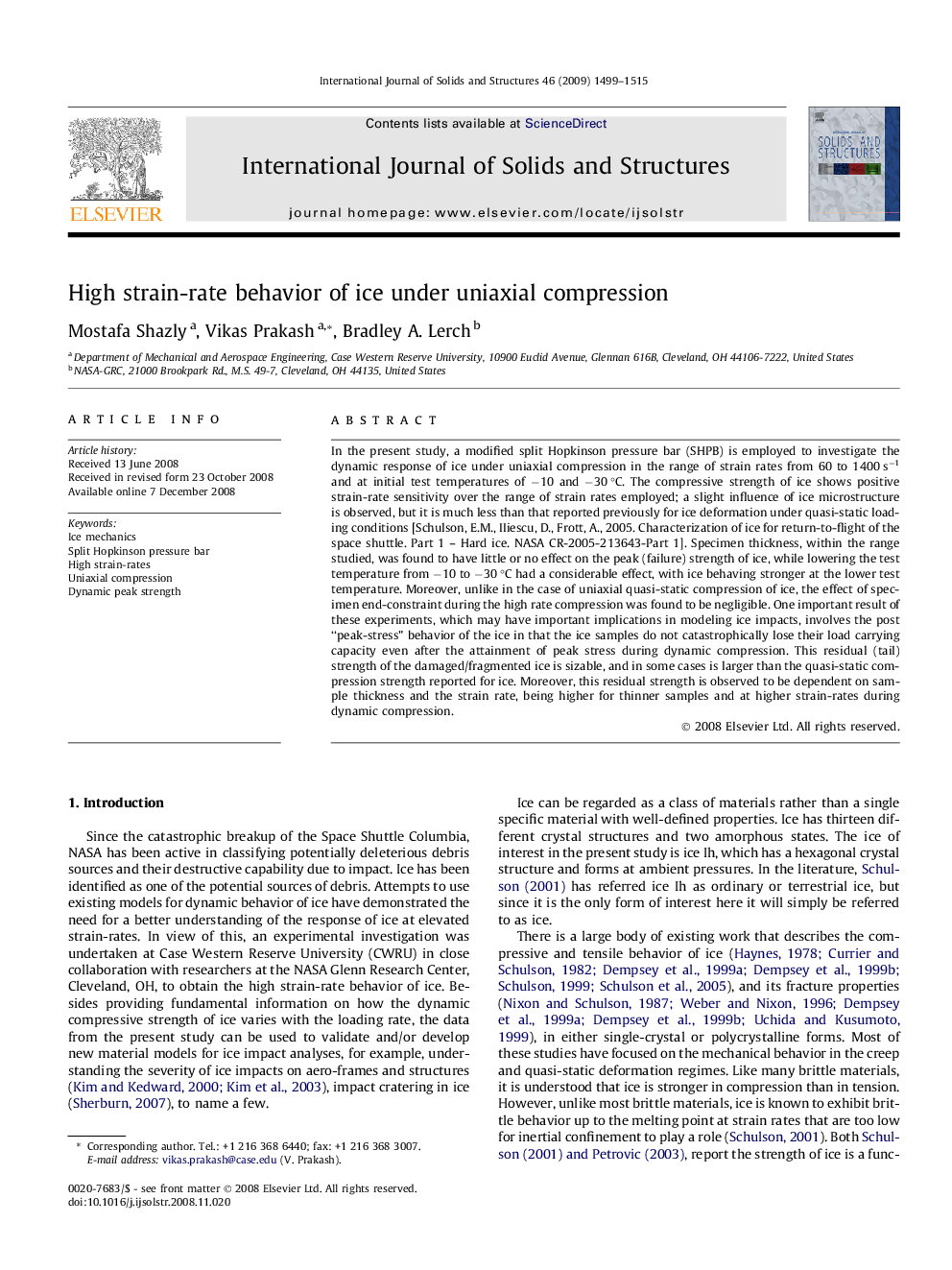| Article ID | Journal | Published Year | Pages | File Type |
|---|---|---|---|---|
| 279342 | International Journal of Solids and Structures | 2009 | 17 Pages |
In the present study, a modified split Hopkinson pressure bar (SHPB) is employed to investigate the dynamic response of ice under uniaxial compression in the range of strain rates from 60 to 1400 s−1 and at initial test temperatures of −10 and −30 °C. The compressive strength of ice shows positive strain-rate sensitivity over the range of strain rates employed; a slight influence of ice microstructure is observed, but it is much less than that reported previously for ice deformation under quasi-static loading conditions [Schulson, E.M., IIiescu, D., Frott, A., 2005. Characterization of ice for return-to-flight of the space shuttle. Part 1 – Hard ice. NASA CR-2005-213643-Part 1]. Specimen thickness, within the range studied, was found to have little or no effect on the peak (failure) strength of ice, while lowering the test temperature from −10 to −30 °C had a considerable effect, with ice behaving stronger at the lower test temperature. Moreover, unlike in the case of uniaxial quasi-static compression of ice, the effect of specimen end-constraint during the high rate compression was found to be negligible. One important result of these experiments, which may have important implications in modeling ice impacts, involves the post “peak-stress” behavior of the ice in that the ice samples do not catastrophically lose their load carrying capacity even after the attainment of peak stress during dynamic compression. This residual (tail) strength of the damaged/fragmented ice is sizable, and in some cases is larger than the quasi-static compression strength reported for ice. Moreover, this residual strength is observed to be dependent on sample thickness and the strain rate, being higher for thinner samples and at higher strain-rates during dynamic compression.
